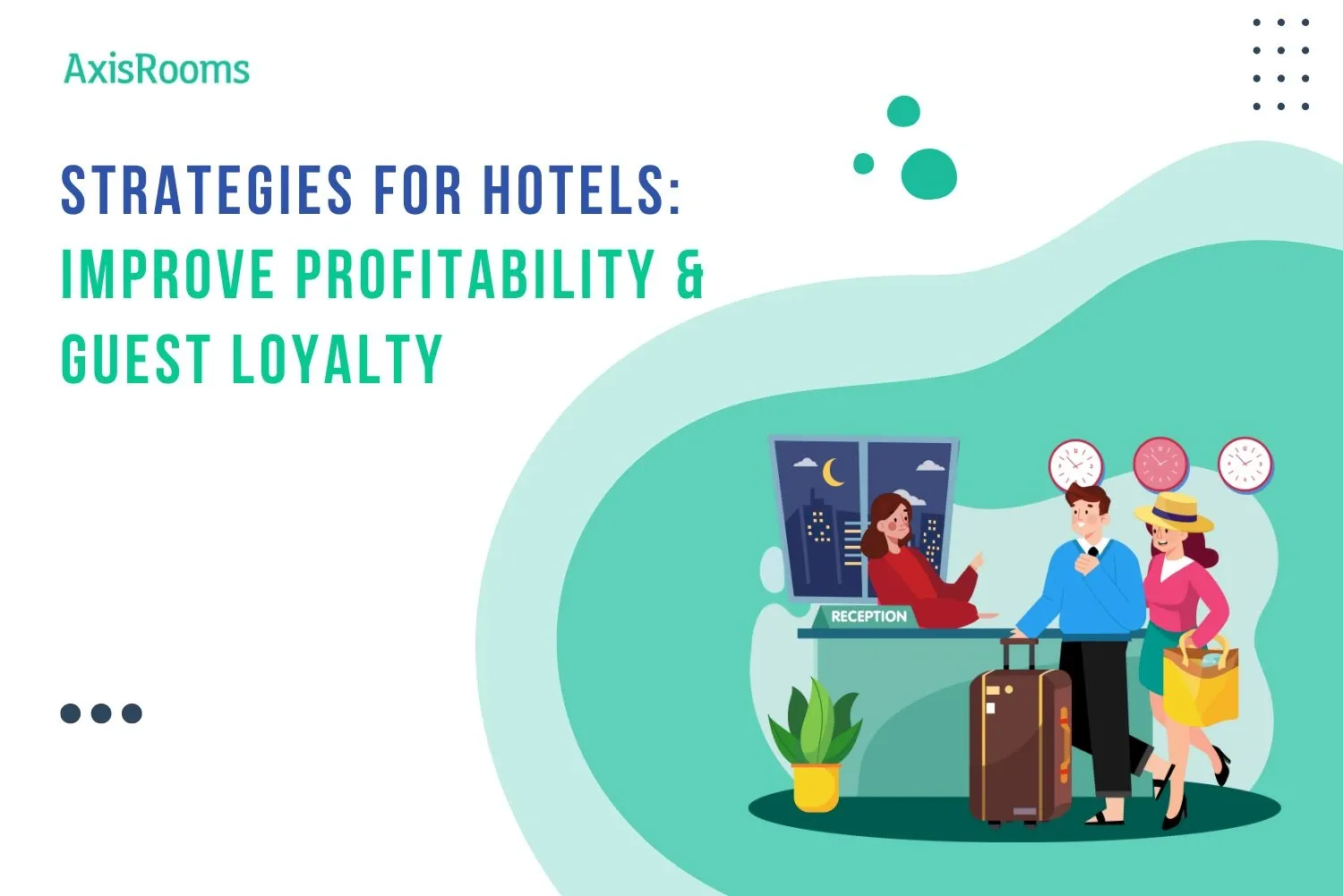Running a hotel is now more challenging and exciting than ever before. With guests seeking a more personalized experience, OTAs battling for attention, and operational costs on the rise, hoteliers are in a constant race to adapt, innovate and stay ahead in the competitive landscape. The good news? These challenges are opportunities in disguise. Whether you are managing a large chain or a boutique property, adopting smart, practical strategies that increase repeat guests and optimize daily operations, will lead to unexplored benefits.
Crafting a Profitable Hotel Distribution Strategy
Your hotel’s distribution strategy impacts everything—from occupancy rates to profitability. With the rise of online travel agencies (OTAs), hotels need to find the right balance between third-party platforms and direct bookings.
Steps to Optimize Your Distribution:
- Diversify Your Channels: Use a mix of OTAs, global distribution systems (GDS), and direct booking platforms to reach a broader audience. Each channel serves a purpose, and combining them ensures better market coverage.
- Focus on Direct Bookings: Direct bookings save on OTA commissions and build stronger guest relationships. Offer exclusive discounts, loyalty programs, or added perks for direct reservations.
- Invest in Technology: Hotel distribution solutions like channel managers help you sync availability, rates, and inventory across platforms, reducing errors and overbookings.
Case in Point: A small hotel chain in Europe used a channel manager to streamline its distribution. By eliminating overbookings and increasing direct bookings through their website, they boosted profits by 18% within a year.
Best Marketing Strategies for Hotels
Marketing is no longer about just selling rooms—it’s about creating an experience that resonates with travelers. Guests want to connect with a hotel’s story and see the value it brings to their stay.
Key Strategies:
- Leverage Social Media: Platforms like Instagram and Facebook let you share compelling visuals and guest stories. Authentic content that showcases your property’s unique offerings draws attention.
- Encourage User-Generated Content: Incentivize guests to post reviews and photos. Positive reviews on TripAdvisor or Google significantly influence booking decisions.
- Email Campaigns for Loyalty: Keep in touch with past guests through personalized email campaigns. Offer early-bird discounts or updates on exclusive packages to encourage repeat stays.
Data Insight: According to TripAdvisor, hotels with more than 50 reviews see a 42% higher conversion rate compared to properties with fewer reviews.
Read More on Effective Hotel Marketing Strategies
Best Strategy for Hotel Room Pricing
Effective hotel room pricing is crucial to staying competitive while protecting profitability. Striking a balance between guest value and revenue generation requires a thoughtful approach.
Proven Pricing Tactics:
- Dynamic Pricing: Adjust room rates based on demand, events, and seasonal trends. This approach ensures you maximize revenue during peak periods without underpricing during slower times.
- Closed to Arrival Strategy: Block check-ins on specific dates when it optimizes occupancy. For example, if your hotel fills up on weekends, use this strategy to increase length of stay by encouraging Thursday or Friday arrivals.
- Bundle Offers: Pair amenities like free breakfast or spa access with room bookings. Guests perceive higher value, making them less likely to compare prices with competitors.
Cost-Cutting Strategies for Hotels Without Sacrificing Quality
Controlling operational costs doesn’t mean compromising on guest experience. Strategic cost-saving measures can improve your bottom line while maintaining high standards.
Ideas to Reduce Costs:
- Energy Efficiency: Switch to LED lighting and install energy-efficient appliances. These small changes can lower utility bills significantly over time.
- Sustainable Practices: Reduce waste by using refillable toiletries and offering digital check-ins. Not only does this save money, but it also appeals to eco-conscious guests.
- Staff Optimization: Cross-train employees to handle multiple roles during peak times, ensuring smooth operations with fewer team members.
Case Study: A mid-sized resort in Southeast Asia saved 20% annually on energy bills by installing solar panels and upgrading its HVAC system.
Distribution Strategy That Drives Results
A clear and effective distribution strategy is a game-changer for hotels. Balancing the benefits of OTAs with direct bookings is key to maintaining profitability and control.
Why Distribution Matters:
- OTAs provide exposure to global travelers but come with high commission fees.
- Direct bookings foster better guest loyalty and give you full revenue control.
Actionable Tips:
- Use promotions on OTAs strategically to fill low-demand periods, but steer guests toward direct bookings for better value.
- Highlight added benefits like flexible cancellation policies or free upgrades for guests who book directly.
Expansion Strategy for Hotels: Scaling the Right Way
Expansion can boost your hotel’s revenue potential, but it requires careful planning. Adding new properties or facilities involves understanding market demand and focusing on what guests value most.
Steps for Successful Expansion:
- Study Market Trends: Research traveler behavior and competitor offerings in your target area.
- Build Partnerships: Collaborate with local tour operators, event planners, and suppliers to expand your reach.
- Test New Revenue Streams: Offer new services like coworking spaces or long-term stays to tap into emerging travel needs.
Example: A boutique hotel in Mexico expanded by opening coworking-friendly suites. By targeting remote workers, the property increased weekday occupancy by 35%.
Staying Ahead with Adaptable Strategies
The hospitality landscape changes constantly, and hotels that adapt thrive. From adopting modern technology to focusing on guest-centric marketing, the path to success lies in staying proactive.
Quick Recap of Strategies:
- Use hotel distribution solutions to improve visibility and revenue management.
- Experiment with the best marketing strategies for hotels, like social media and email campaigns.
- Apply cost-cutting strategies for hotels that maintain service quality while reducing expenses.
- Adopt flexible pricing methods, including the closed to arrival strategy for hotels, to optimize bookings.
- Develop an expansion strategy for hotels that aligns with guest demand and market trends.
The goal for any hotel isn’t just to survive—it’s to create a place that leaves a lasting impression, where guests feel valued and eager to return. Success comes from delivering thoughtful experiences, adapting to trends, and running efficient operations that consistently meet and exceed expectations. By implementing these strategies with care and focus, you’ll not only build profitability but also foster lasting guest loyalty, ensuring your hotel becomes a trusted destination travelers choose time and time again.


